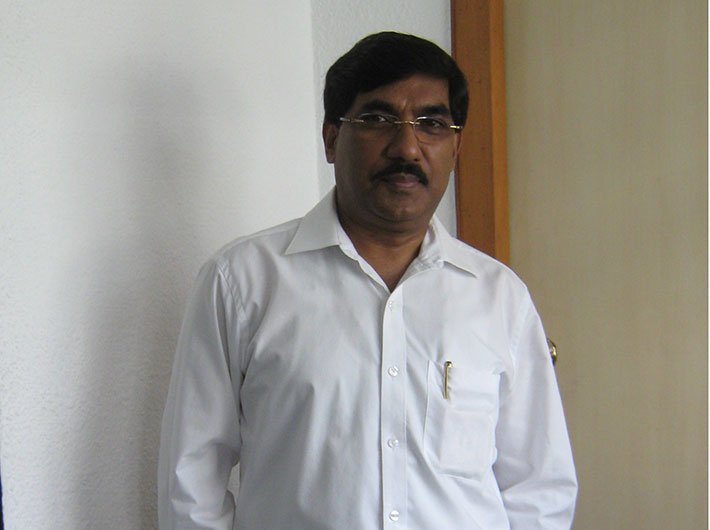Like any metropolis in India, the rapidly expanding Chennai is at a crossroads so far as transportation is concerned. Given the city’s expanse and demographic profile, there is a huge demand for more modern transport, and the government is trying to meet that with metro, monorail and intelligent transportation system, says Braj Kishore Prasad, who was principal secretary (traffic), Tamil Nadu. (Soon after this interview, he became additional secretary, home ministry.) The 1983-batch Tamil Nadu cadre IAS officer spoke to Shivani Gaurav Chaturvedi on challenges in solving the traffic and transport problems in Chennai. Excerpts from the interview:
Q. Most state transport corporations are now looking at using technology to improve efficiency. What is Tamil Nadu State Transport Corporation (TNSTC) doing in this direction?
We are in the process of implementing electronic ticketing machine. Tickets in buses are at present given out by conductors, which is time-consuming. An electronic ticketing machine, on the other hand, has got a pre-programmed fare structure, so when a passenger boards a bus and says he or she wants to go to a certain place, the ticketing machine, which has GPRS- plus GPS-enabled facility, will automatically issue the ticket. The stages on the route and respective fares are fed to the machine.
For example, if a passenger gets on at stop 1 which, let’s say, is Beach, and intends to get down at stop 3 – say the Madras high court – the driver will press the buttons 1 and 3. A ticket will come out and the corresponding fare will be displayed on the machine and the ticket, for which the money will be collected by the conductor. The person just has to tell the destination and the pre-programmed ticket will automatically get issued.
Tickets can be issued faster with this initiative. The service has already been introduced on some city routes.
Second, we are introducing the smart card system, which will start in Chennai and later expand to other cities of the state. (As part of the scheme) passengers can buy smart cards and get it recharged for '100 or '200. In the bus, commuters will be required to swipe the card in the electronic ticketing machine (which will be with the conductor) that will deduct the exact fare for the journey. The system will also put an end to the daily fights over change. These schemes have already been announced and will be introduced by next year.
Third, we are planning to introduce SMS and GPRS-based real-time passenger information system (RTPIS). Unless they are regular commuters, people do not know the route on which a bus plies. Though we have written the bus route numbers at certain stops, it does not provide detailed information. RTPIS tracks the current location of all buses and estimates their arrival time at different stops. Estimates are updated every time the bus sends an update. The information is then put up on display terminals at bus stops and sent to commuters through text messages. If a bus is arriving late at a stop a passenger would get updated information.
Plus, we are strengthening web-based ticketing for buses on long routes.
Q. Intelligent city transport management is part of the initiatives that can make roads safer. How is Tamil Nadu gearing up on this front?
We are going to introduce advanced IT-based monitoring for ticketing and passenger management, fleet management (among others). Plus, there is the intelligent transportation system (ITS), which has got various components. At present we are using ITS for fleet management and scheduling of buses. We need to make it more dynamic and we have initiated steps for that.
We are already in discussions with Chennai Metro Rail Limited and our IT groups to implement the system in the city. It will definitely help improve the way transport (traffic and commuters) moves and behaves in the city. ITS will enable us to monitor movement of all buses (and) we will know the road space, areas of congestion, whether you (motorists) have to take a diversion, etc. ITS is not limited to TNSTC – even traffic police will get data on congestion, or which bus stop has more passengers (at that particular point of time).
For instance, if 1,000 more passengers arrive at the Central station suddenly, the ITS will give a signal to send an additional 100 buses.
It also gives you information about roads – like which routes are more congested and if an accident has taken place on a certain route what alternatives are available for commuters. If one route is congested, ITS will guide commuters on an alternative route. Recently there was a seminar in the city in which we had a detailed discussion with Japanese representatives regarding implementing this system in Chennai. All data will be gathered at a central monitoring place and monitoring and sharing of information will be done electronically.
Q. Chennai is planning a bus rapid transit (BRT) project. While Ahmedabad’s BRT is hailed as a success, Delhi BRT is floundering. How are the agencies handling BRT project in Chennai? What lessons have you learnt from Delhi and Ahmedabad?
In Chennai, an 88-km corridor has been identified for the BRT. This year we are proposing to carry out a study and identify which segment to take up first. We are also exploring the feasibility of BRT in Coimbatore and Madurai as a solution to improve transportation there.
In Delhi BRT, I understand planning and designing was not accurate and all parameters were not taken into account. That is why it did not give the desired result. Across the world, BRT has helped ease traffic congestion in cities. BRT’s success stories as well as failures are from across the world, we have to draw lessons from all those cases and have to be careful.
A pre-feasibility study has already been done, and the detailed study will be done now. We will also take into account advice of experts. The government will use its own expertise as well. We will go ahead with the work only if the government finds BRT is going to work here.
The government has not sanctioned the work for BRT so far. A pre-feasibility study report was submitted in 2011. It was announced in the budget this year a detailed study would be taken up. Moreover, improving urban transportation is one of the high-priority areas in Vision-2023 of the government.
Q. Do you think efforts made so far are adequate to keep up with the city’s traffic load and expectations generated by the demographic and economic growth?
Chennai is a fast-growing city and there is definitely demographic (population) pressure on the public transportation system as well on other urban amenities. The demand is increasing but at the same time the state has endeavoured to ensure that we fulfil the growing demands. (While) several new services have been added in recent times, other faster transportation systems are also under implementation – such as metro rail (work on), monorail (proposed). The city will have an efficient transportation system once these systems come into operation.
Of course, this is a transition period for every city; there will be some difficulty for the public because demands will grow manifold and supply of transportation facilities may not be at that pace. Eventually, however, demands will be met as a lot of projects are in pipeline. For instance, metro rail work is going on in Chennai (so) people face difficulties due to traffic congestion and traffic being diverted on some roads. But once the work is completed and metro rail become operational, it will come as a relief to people.
Q. What are the challenges in solving traffic and transport issues in Chennai? And what about the finances/funding aspect?
As I told you, our (bus) fares are low and on the other hand input prices are going up because of dual pricing policy (of the earlier UPA government at the centre) – the price of diesel is increasing every month. That is causing us an additional financial burden. Rising costs of fuel and other inputs is the biggest challenge for us.
As far as operational challenges are concerned, proper planning and coordination of all departments with stake in transportation have to be done. We recently set up the Chennai unified metropolitan transportation authority (CUMTA) for this purpose. This umbrella authority will address concerns of different stakeholders.
Q. You are slated to take charge as additional secretary in the union home ministry. What would be your priorities?
Let me join first (smiles)! The government has already set the agenda (and) the prime minister has very clearly defined what we have to do. Priorities of the home ministry are also defined. Accordingly, we have to address issues that are brought to the notice of the government.
(This interview was first published in July 1-15, 2014 issue of Governance Now.)

